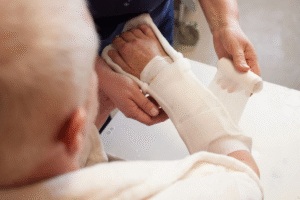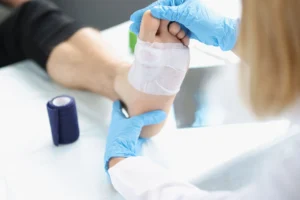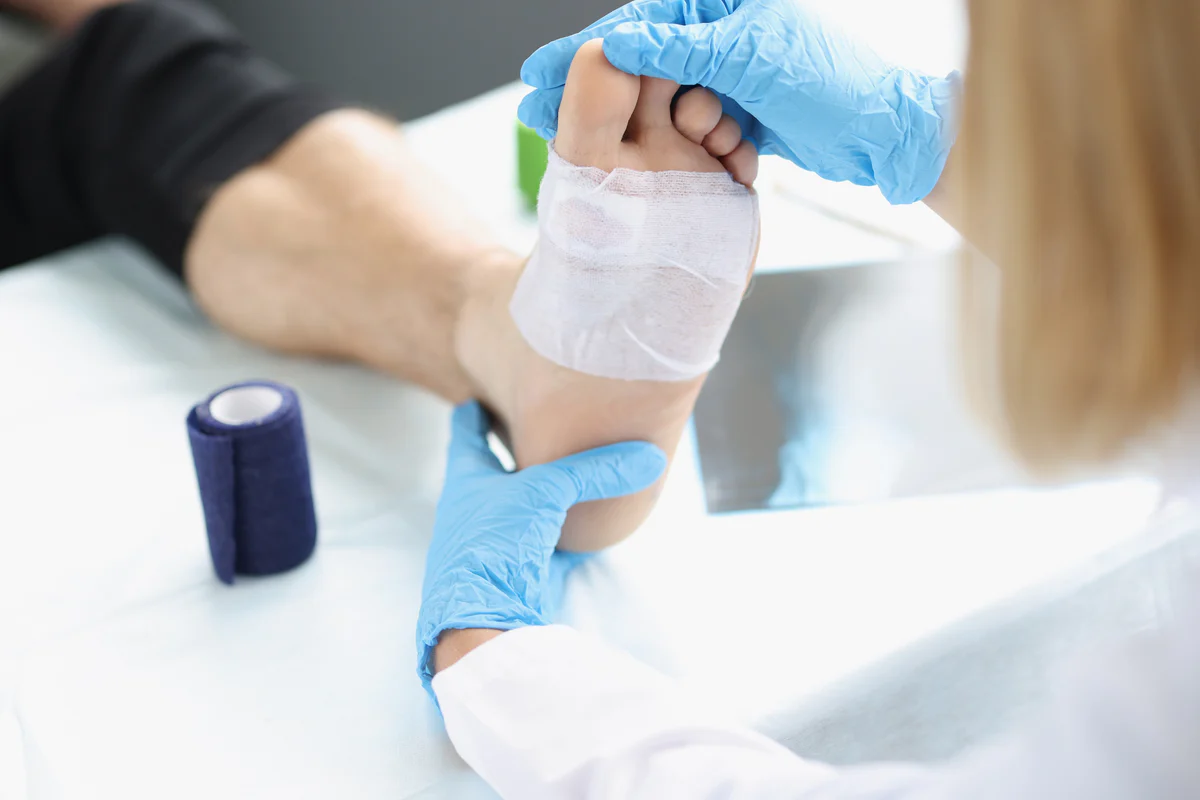Managing forefoot ulcers can be a daunting challenge, especially for individuals dealing with underlying conditions such as diabetes or poor circulation. Specialized care is crucial not only to relieve pain but also to ensure optimal healing and prevent further complications. This comprehensive guide explores the benefits of Orthopedic Treatment for Forefoot Ulcers, detailing the condition, the available treatments, and the proactive steps you can take toward recovery.
What Are Forefoot Ulcers?
Forefoot ulcers are open sores that develop on the front part of the foot. Often a result of constant pressure, friction, or a combination of factors like ill-fitting shoes and underlying medical conditions, these ulcers represent a significant health concern. Among the most common causes are:
- Pressure and Friction: Continuous pressure on the forefoot from an uneven gait or improper footwear can damage the skin. Friction from repeated movement or rubbing further aggravates the tissue.
- Underlying Health Conditions: Chronic diseases like diabetes can lead to nerve damage (neuropathy), reducing sensation in the feet. This makes it difficult for patients to notice small injuries that may evolve into ulcers. Poor circulation, often seen in diabetes, also hampers the body’s ability to heal these wounds properly.
- Infections and Complications: Left untreated, forefoot ulcers can become infected. Infection may lead to tissue damage and, in severe cases, require surgical interventions or even amputation.
Understanding the root causes of forefoot ulcers is essential for effective prevention and treatment. Early recognition and intervention can help manage the condition before complications arise.
The Need for Specialized Orthopedic Treatment
Orthopedic Treatment for Forefoot Ulcers is designed to address the unique challenges presented by these wounds. Unlike general wound care, orthopedic treatment targets the underlying biomechanical factors that contribute to ulcer formation.
- Early Intervention: Prompt assessment by orthopedic specialists allows for a comprehensive evaluation of the foot’s structure. Early intervention helps prevent the ulcer from worsening or becoming infected.
- Targeted Care: Orthopedic treatment targets the mechanical pressures and imbalances that exacerbate ulcer formation. By identifying and correcting issues like improper weight distribution, practitioners can reduce the pressure on the affected area.
- Preventing Further Complications: With specialized care, not only is the ulcer treated, but measures are taken to ensure long-term healing and prevention of recurrence. This holistic approach is key to sustaining mobility and reducing pain.
The Orthopedic Treatment Process at Tec Orthopedics
At Tec Orthopedics, a team of dedicated experts employs a customized approach to treat forefoot ulcers. The process is tailored to meet individual needs, ensuring both immediate relief and long-term healing. Below are the key steps involved in the treatment process:
Initial Assessment & Diagnosis
A thorough initial evaluation is critical. During the assessment, orthopedic specialists:
- Examine the Ulcer and Surrounding Tissue: Careful inspection of the ulcer helps determine its severity, depth, and signs of infection.
- Assess Foot Mechanics: Specialists evaluate how weight and pressure are distributed across the foot. This assessment may include gait analysis and pressure mapping to detect imbalances.
- Identify Underlying Conditions: Testing for diabetes, peripheral vascular disease, or other systemic conditions that might impede healing is a standard part of the evaluation.
This comprehensive diagnosis ensures that every contributing factor is addressed in the treatment plan.
Developing a Custom Treatment Plan
Once the assessment is complete, Tec Orthopedics creates a treatment plan tailored to the patient’s specific needs. The plan typically includes:
- Wound Management Techniques: Advanced care techniques are used to promote wound healing. This may involve debridement (removal of dead tissue), specialized dressings, and, when necessary, antibiotic therapy to control infection.
- Pressure Relief Solutions: Custom orthotics or specialized footwear play a crucial role in off-loading pressure from the affected area. This minimizes further friction and allows the wound to heal.
- Rehabilitation and Mobility Support: Physical therapy and rehabilitative exercises help restore proper foot function and enhance mobility. A targeted exercise regimen is often prescribed to reduce pain and strengthen surrounding muscles.
- Monitoring and Follow-Up: Regular follow-ups are essential to track healing progress and adjust treatment if needed. Continuous monitoring helps identify early signs of complications before they escalate.
Ongoing Care & Follow-ups
Healing from a forefoot ulcer can be a gradual process, and ongoing care is vital. Regular follow-up appointments allow orthopedic specialists to:
- Monitor Healing: Continuous assessment ensures that the ulcer is responding well to treatment.
- Adjust Treatment Plans: If the wound isn’t healing as expected, adjustments such as changing the type of dressing or modifying orthotic supports can be made.
- Provide Support and Education: Patients receive guidance on how to care for their feet at home. Education regarding lifestyle changes, proper footwear, and daily monitoring is emphasized to prevent recurrence.
Benefits of Orthopedic Treatment for Forefoot Ulcers
Choosing an orthopedic approach for treating forefoot ulcers offers several significant benefits:
- Enhanced Healing: Specialized wound management techniques promote faster and more effective healing.
- Pain Relief: Targeting the mechanical imbalances in the foot not only addresses the ulcer but also reduces the pain often associated with it.
- Improved Mobility: By ensuring proper foot support, orthopedic treatment can significantly improve mobility, leading to a better quality of life.
- Prevention of Complications: By addressing both the symptoms and root causes, this approach greatly reduces the risk of complications such as infections or further tissue damage.
- Customized Care: Every patient is unique. With a tailored treatment plan, patients receive care that addresses their individual needs and promotes long-term wellness.
Preventative Measures and At-Home Care
Long-term success in healing forefoot ulcers and preventing their recurrence involves proactive at-home care and preventive measures. Here are some practical tips:
- Daily Foot Inspection: Regularly inspect your feet for any signs of redness, blisters, or cuts. Early detection of skin changes can prompt timely medical intervention.
- Proper Footwear: Choose shoes that offer adequate support and a wide toe box to reduce unnecessary pressure on the forefoot. Custom orthotics can be invaluable in distributing weight evenly.
- Maintain Blood Sugar Control: For individuals with diabetes, controlling blood sugar levels is critical. Consistently high blood sugar can impede healing and increase the risk of ulcers.
- Moisturize Regularly: Keeping the skin moisturized prevents cracks and dryness that may lead to skin breakdown.
- Manage Weight: Maintaining a healthy weight can reduce the pressure on the feet during daily activities.
- Follow Medical Advice: Adhere to any rehabilitation or exercise programs provided by your orthopedic team. Regularly attending follow-up appointments ensures that any emerging issues are promptly addressed.
These measures, combined with professional care, form a solid foundation for preventing future foot problems.
Takeaway
Forefoot ulcers are more than just surface wounds; they are indicative of underlying stresses on the foot that require specialized attention. Orthopedic Treatment for Forefoot Ulcers offers a multifaceted approach that goes beyond immediate symptom relief. By addressing the root causes of these ulcers, patients can experience significant improvements in healing, pain management, and overall mobility.
The expert team at Tec Orthopedics is dedicated to providing customized treatment plans that align with each patient’s unique needs. Their comprehensive approach not only targets wound care but also equips patients with the tools and knowledge required for ongoing foot health. Whether through advanced wound management techniques, the use of custom orthotics, or dedicated follow-up care, the focus is always on long-term healing and improved quality of life.
Taking proactive steps such as regular foot inspections, proper footwear, and maintaining a healthy lifestyle can help prevent the recurrence of forefoot ulcers. Education and awareness about these preventive measures are key to sustaining the benefits of professional orthopedic care.
If you or a loved one is struggling with forefoot ulcers, consider the benefits of specialized treatment. Contact Tec Orthopedics today to schedule a consultation and take the first step toward effective, enduring relief. Your journey to improved mobility and reduced pain starts with personalized, expert care that truly addresses the heart of the issue.











